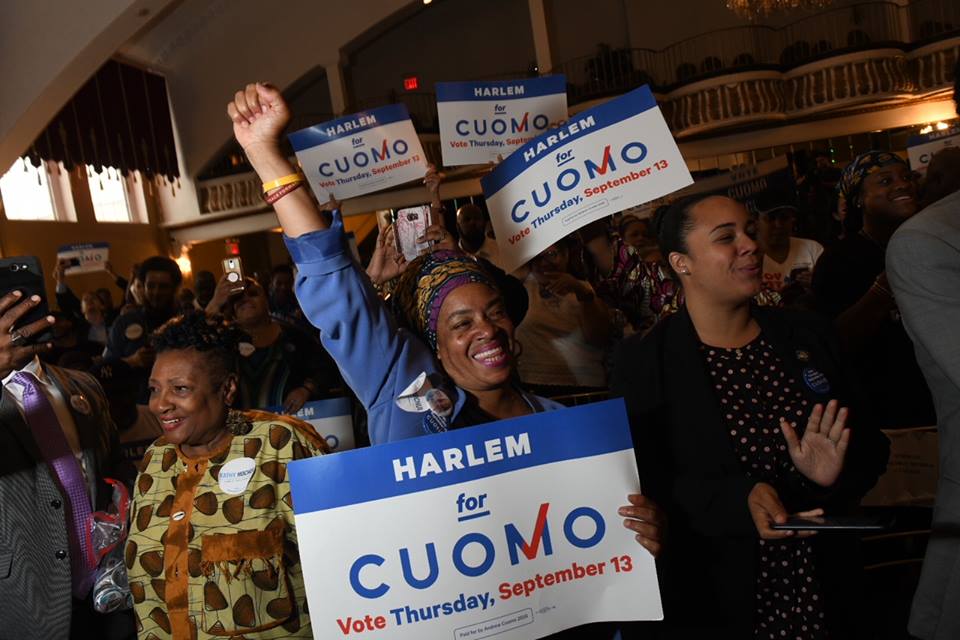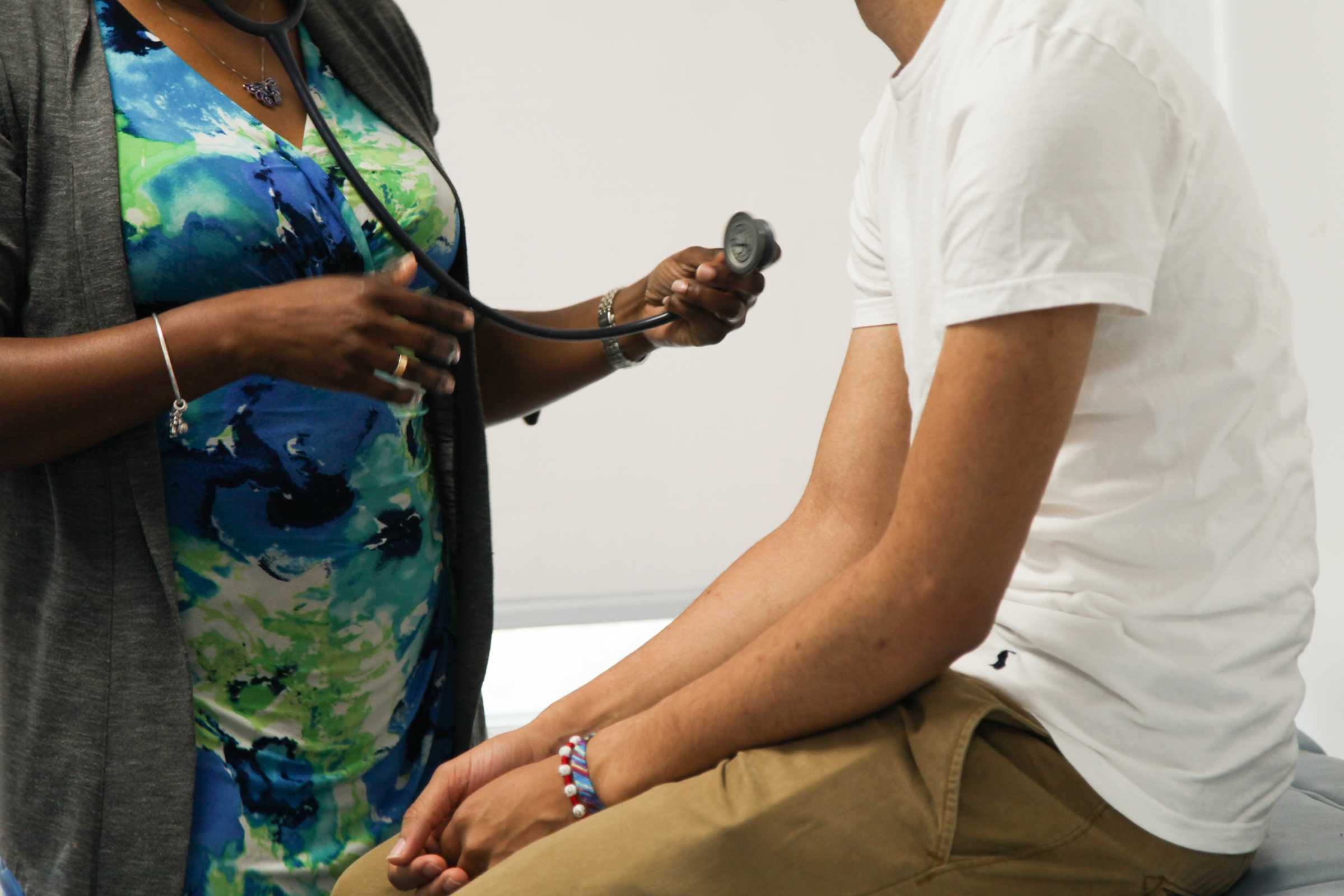Several Immigrant heavy areas in New York saw a massive jump in voter turnout this election cycle, including Jackson Heights and South Ozone Park where the turnout almost doubled.
Documented analyzed the New York State Board of Election voter registration numbers and New York City Board of Election most recent results in 21 state assembly districts in New York City where, according to the 2016 American Community Survey, 25 percent or more of the residents are naturalized citizens. Both turnout and total votes jumped since the last midterms in 2014.
Assembly District 34, which covers part of Jackson Heights in Queens, saw an 81 percent jump in voter turnout (the number of voters voting out of total registered voters) in the governor’s race, with 37 percent of enrolled voters going to the polls last week, compared to 20 percent four years ago.
The total number of voters more than doubled in size, growing 111 percent.
In the neighboring district, Assembly District 39, which also covers the immigrant-heavy areas of Jackson Heights and Corona, Catalina Cruz became the first former Dreamer elected to the New York State Assembly last week. Her district also witnessed an 88 percent jump in turnout as the percentage who voted grew to 34 percent from 18 percent in 2014.
Across New York City, voter turnout was 38 percent, up from 22.7 percent in 2014. The higher turnouts may be a result of the increased number of naturalized Latinos now eligible to vote in the five boroughs, according to data provided to Documented by Laird Bergad, distinguished professor of Latin American and Latino Studies, Lehman College, City University of New York.
Of the approximately 300,000 eligible Latino voters in Queens, 43 percent are naturalized citizens, the data shows.
In the Queens Village, Cambria Heights, and Bellerose Manor areas encompassed by Assembly District 33, almost a third of the residents are naturalized citizens (30.8 percent). The percentage of eligible voters who voted rose to 42 percent this year, up from 25 percent four years ago. According to data from the 2016 American Community Survey, 21 percent of the residents were born in Latin America.
In Assembly District 38, another immigrant heavy district in Queens that encompasses Woodhaven and Glendale, the percentage of eligible voters who turned out to vote increased to 33 percent from 17 percent in 2014 while the total number of eligible voters increased by 132 percent.
The results in New York could have implications for other areas in the country with a large number of Latinos, such as Texas, Georgia and Arizona, where historically the voter turnout of Latinos has been low.
[Read more about the Democrats push to turnout Latino voters here.]
The increased turnout in New York was driven by a number of factors including the national interest in immigration issues, said Heath Brown, associate professor of public policy at CUNY. “Immigrants care about many things, but immigration has obvious and special meaning, and this likely increased the interest in the election for immigrants,” said Brown.
The use of social media by local advocacy groups also boosted turnout, he said.
“Social media has become an effective tool that spans generation and language, and was a focus of many groups to share information with immigrants about registering to vote and ultimately turning out,” said Brown.
The New York Immigration Coalition (NYIC) and other groups have been trying to get immigrant voters to the polls with for more than a decade. Wennie Chin, a senior manager of civic engagement at NYIC, said that they saw a “groundswell of voters coming out,” this year. That was driven by candidates such as Jessica Ramos, Juliz Salazar and Alexandria Ocasio-Cortez who specifically targeted immigrant voters.
“We saw these candidates and their campaigns building a lot of momentum in immigrant communities,” Chin said. “When you are going into immigrant communities, you need to have the language capacity and the cultural capacity to really mobilize and share the message of the campaign with them,” Chin said.
By partnering with groups such as Chhaya Community Development Corporation and the Minkwon Center, Chin said NYIC was able to register large numbers of immigrant voters this year.
The increased turnout among naturalized citizens may have created particularly tight races in New York City. Last week, Democrat Andrew Gounardes was leading Republican Marty Golden in the New York State Senate race for Senate District 22 with 100 percent of precincts reporting, but the Republican has refused to concede until absentee ballots are counted.
One reason for the tight Golden/Gounardes race may be because the district encompases Bay Ridge, which has a population of 30 percent naturalized citizens. Turnout in that area grew 51 percent in this last election cycle, with the total votes also jumping by 65 percent.
[Read more about the push to get Arab American voters out to the polls here.]
Latino voters weren’t alone in increasing their voter participation. Jagpreet Khakh, a lead organizer at Chhaya CDC in Jackson Heights, said that the organization has been working with Asian immigrants, knocking on doors and holding workshops and community programs to help people understand the voting process. “We knocked on 300 doors, made 5,000 calls and sent about 400 texts to remind folks that the election was coming,” said Khakh. “We try to do that in the native language.”
Chin said that this year’s election was the culmination of years of work. Many naturalized citizens are now familiar with the process. “They remember us from years past,” said. “Now they’re like, ‘Oh, yes, now we know what to do.’”
Correction: This article was updated on Nov. 18 to reflect the fact that voter turnout grew 88 percent in Assembly District 39, not voter registration as the article previously stated due to an editing error.















